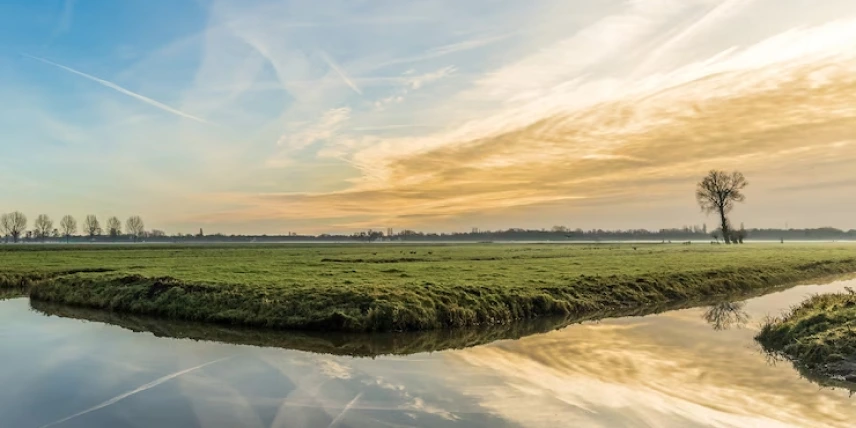
Many homeowners, developers, and property managers struggle with how to properly manage/treat wastewater from their facilities. Improperly disposed sewage creates unsanitary conditions leading to disease, odors, fies, mosquitoes and other nuisances. This degrades resident's quality of life and hurts property values. It's a situation that nobody wants to live with, but many are forced to cope with.
Being able to properly manage wastewater has a number of obvious benefts. Odors and sanitary nuisance conditions are eliminated, and clean water can be produced and recycled for landscape irrigation and fushing. But what if the purification system was in itself, part of a beautiful landscape plan?
In contrast to smelly, complicated mechanical systems, wastewater can be effectively managed using natural systems such as constructed wetlands. These systems can be built so there is no water exposed during the treatment process, thus there are no odors and no potential for fies or mosquitos.
Engineering advances such as Forced Bed Aeration TM of the wetland dramatically reduces the area needed for these natural systems, allowing them to easily be configured in the context of site planning. With proper selection of vegetation and system components, these can be engineered into "Wetland Gardens" that provide year-round perennial flower beds while performing their core function of water treatment.
India faces rapid industrialization, putting future pressure on land use and water resources. Effective sewage treatment remains as a critical gap in the country’s infrastructure still. Pollution resulting from lack of treatment negatively impacts downstream communities, depriving people of clean water for drinking, bathing and agriculture. Thousands of water bodies continue to be polluted with untreated water streams entering them on a daily basis.
Multiple treatment technologies have been introduced over the last 30 years, but they have been mechanically complex systems and equally complex in operations. Most systems are found to be partially operated/not operated due to high operations & maintenance (O&M) cost or dis-functional due to operational challenges.
Standard types of passive wetlands rely on the diffusion of oxygen from the air into the water column, which is a very slow process. This lack of oxygen transfer slows the removal of organic compounds and limits the removal of ammonia from wastewaters. Aerated wetlands require lesser area and extremely effective. The systems do not produce excess sludge like conventional mechanical treatment plants.
While these systems have been in use for over 20 years in Europe and North America, advances such as wetland aeration have allowed the technology to be adapted to India, where the favorable climate allows for maximum benefits. Working extensively on the application of Aerated Wetlands for domestic, industrial as well as I summarize below:
"Wetland systems are really coming into their own in India; we now are able to treat 1 KLD of waste in less than 1 Sq Meter in many instances. A single-family villa sewage can be treated in barely a 30 SFT space and 50 families' sewage can be treated in a 300/350 SFT space. Because wetland systems are so simple to operate and maintain, there is growing interest from industry and diffuse pollution sources such as groundwater seeps, landfill leachate, and mining waters".
There are some significant challenges with apartments and villas where the initial load is so less due to low occupancy rate while a full capacity system is deployed which will have enough challenges for the operator and also higher operational expenses loaded on a few families.
Here is the case study of a campus which has extremely varying loads of 1,500 resident users during normal course that changes to a scale of 5,000, 10,000, 20,000 and 30,000 users at various times for varying durations like 3/5/7/10 days based on the events & trainings that take place. So, the loads range between 200 KLD till 2.40 MLD. The inlet BOD ranges from 150 to 290 while COD goes up to 500, TSS values are 150 to 200. Treated water characteristics are BOD < 10, COD < 50, TSS < 10 & TN < 10.
This system has two major control points which takes a few minutes for the operator to adjust whenever the loads change to meet the treatment needs. And the system operates like a breeze with no operator running around altering or changing configurations.
This design has been saving the costs involved in operating the system and it had no hiccups during the lockdowns where there wasn't any operator on site. In the past 23 months that it was operational, this Aerated Wetlands installation has saved over 40 lakhs of of O&M costs for the campus as against any potential conventional mechanical system if deployed.